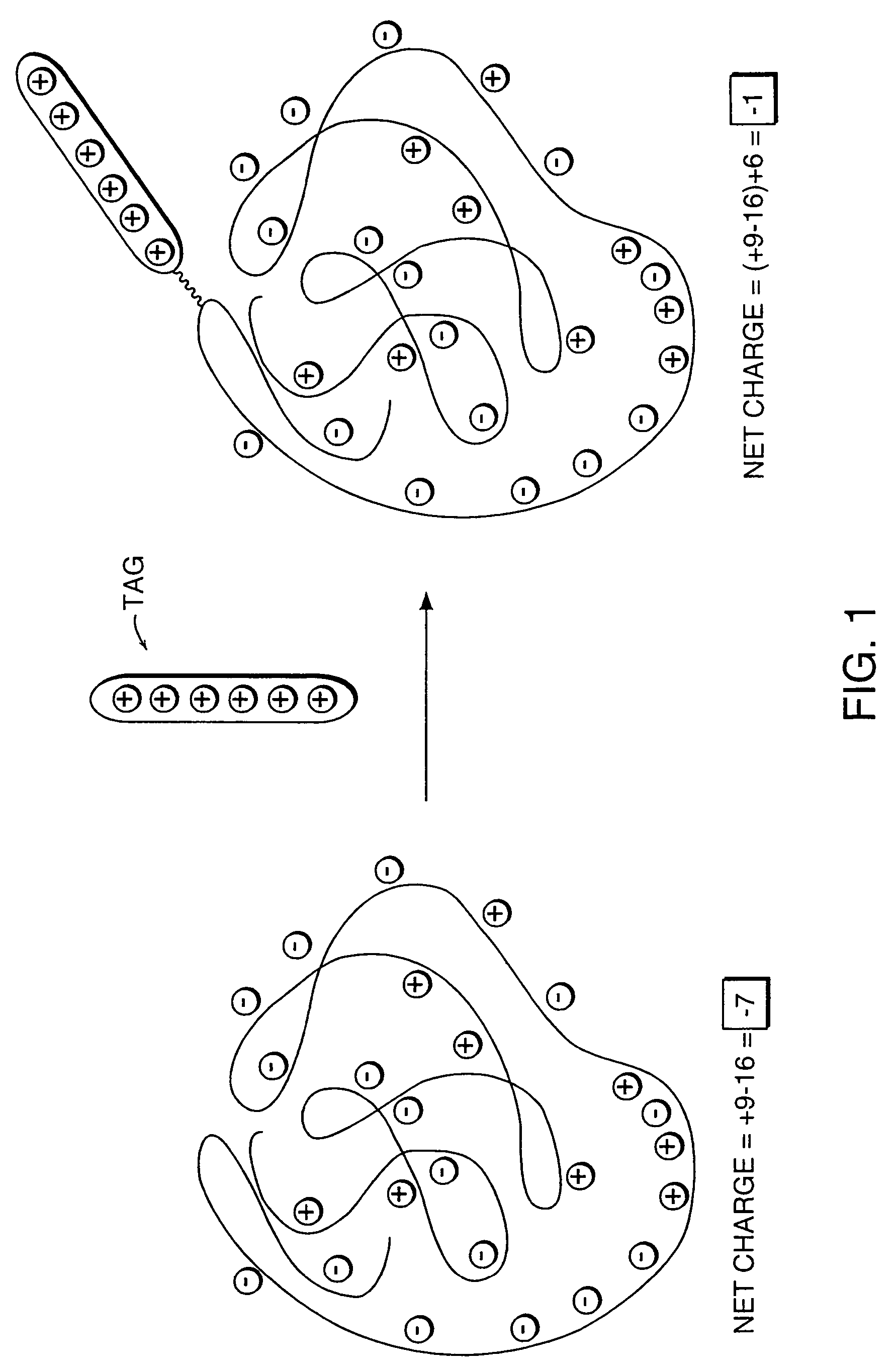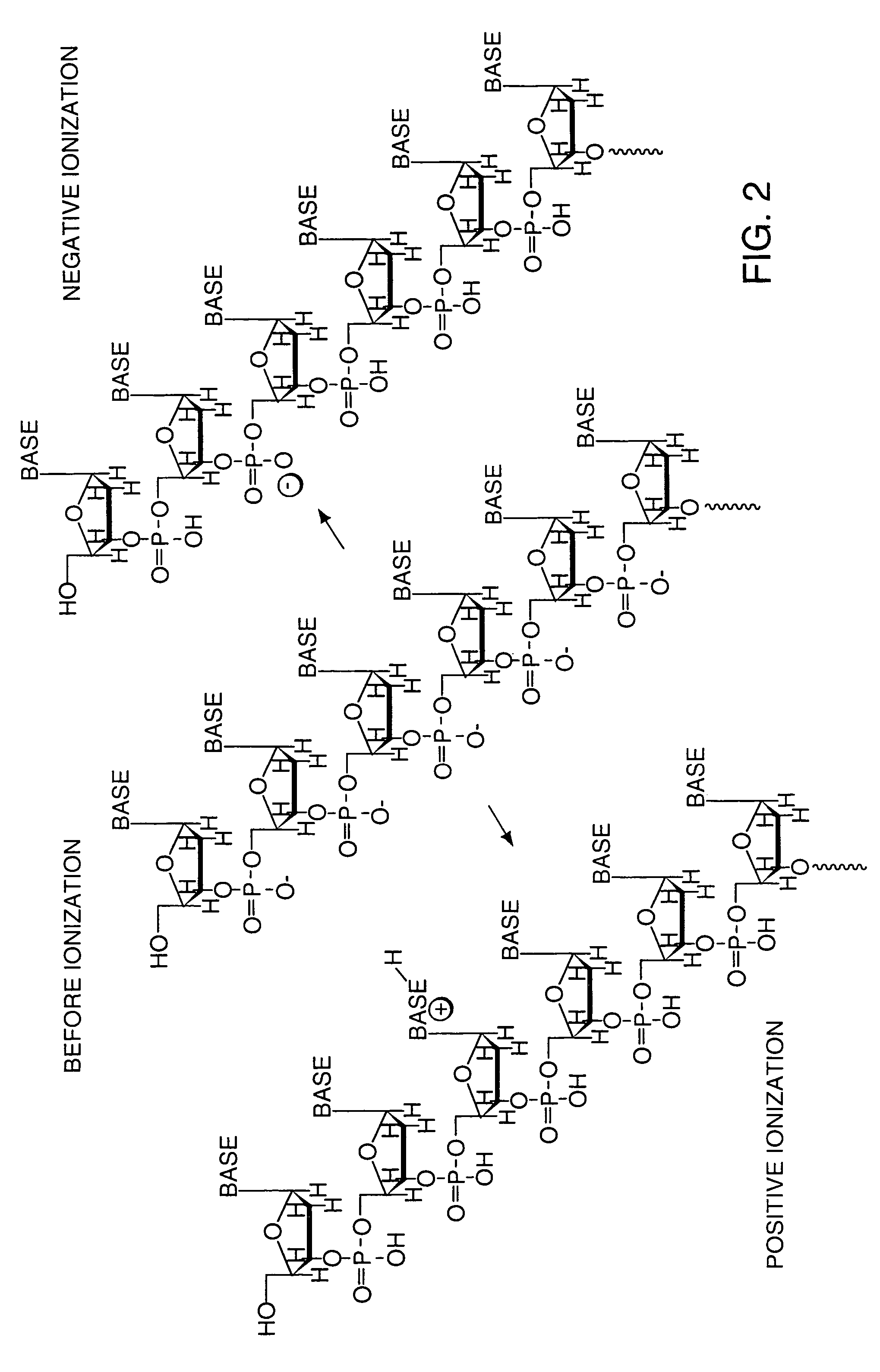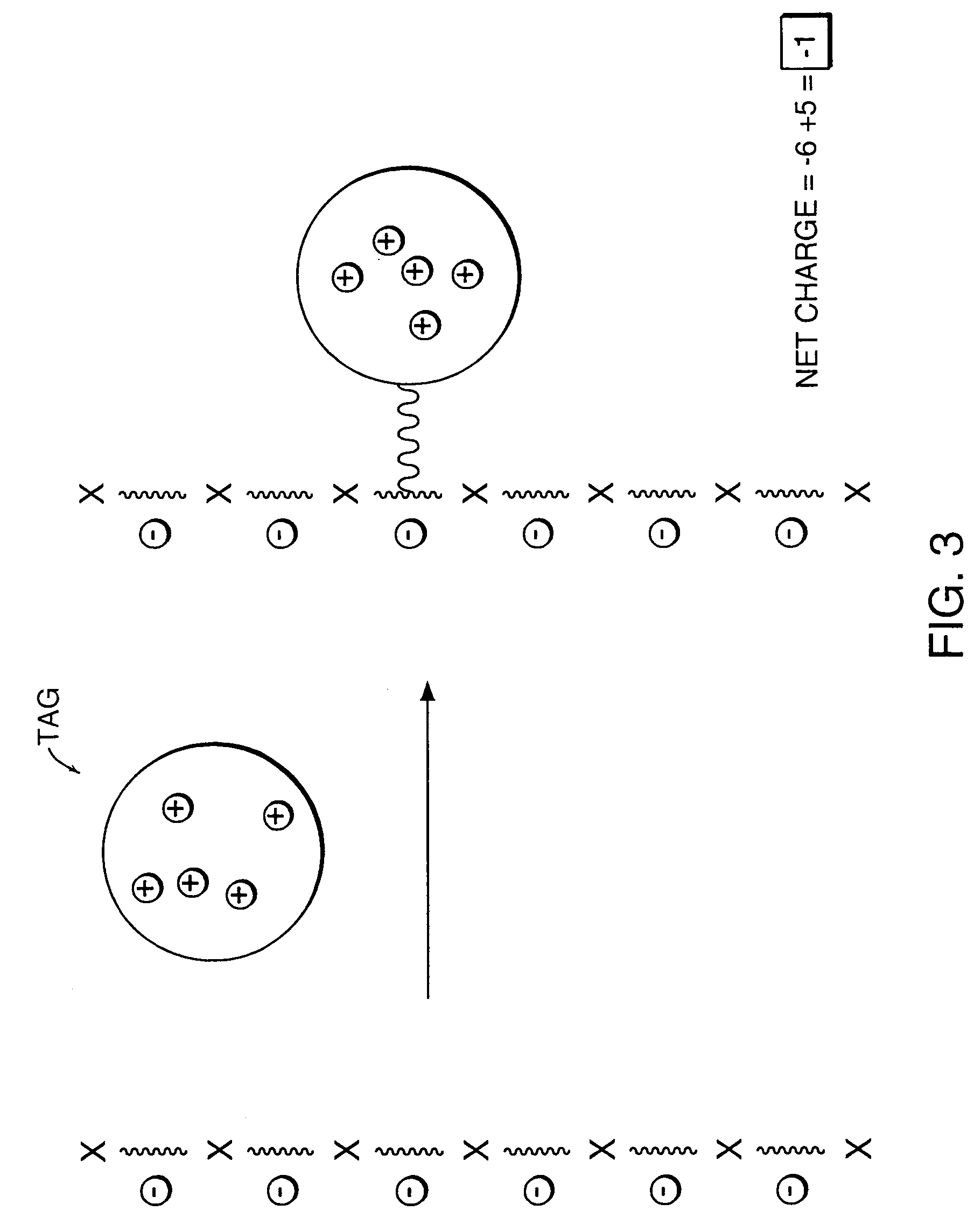Increasing ionization efficiency in mass spectrometry
a mass spectrometry and efficiency technology, applied in mass spectrometers, particle separator tube details, instruments, etc., can solve the problems of incomplete alkylation, difficult to interpret the mass spectrum, and complicated mass spectrum interpretation, so as to achieve less fragmentation of molecular ions and high ionization efficiency
- Summary
- Abstract
- Description
- Claims
- Application Information
AI Technical Summary
Benefits of technology
Problems solved by technology
Method used
Image
Examples
example 1
Attaching a Pre-charged Tag to the Analyte
[0065]The polyionic molecule to be analyzed by mass spectrometry is attached to a tag already bearing charged groups in order to neutralize all but one charge on the analyte. Shown in FIG. 10 is an oligonucleotide with a reactive amine handle being coupled to a tag having an N-hydroxysuccinimide (NHS)-activated ester for coupling.
[0066]The coupling of the analyte to the tag can be accomplished using any of the large number of covalent bond-forming reactions known in the art. These reactions include alkylations, acylation, phosphorylation, sulfonylation, condensation, silylation, and disulfide formation.
[0067]Of particular interest for attaching a tag to a polynucleotide is the formation of an amide bond. Primary amine handles can easily be introduced into the polynucleotide during synthesis using modified phosphoramidites, and an amine-reactive functional group can be introduced into the tag. Examples of amine-reactive functional groups incl...
example 2
Creating Charges on the Tag After Attachment to the Analyte
[0072]The polyionic molecule (i.e., oligonucleotide) is attached to an uncharged tag which is later modified to produce the charged groups. The uncharged tag can be attached to the analyte by a variety of chemical methods including those described in Example 1 supra. The uncharged tag has a particular number of functional groups which can be later modified to create charged groups thereby resulting in a change in net charge on the tagged analyte. The tagged analyte with the newly created charges on the tag is then subjected to analysis by mass spectrometry. Any of the ionization techniques described supra could be used in the mass spectrometry step.
[0073]In one embodiment, the polyionic molecule to be analyzed by mass spectrometry is attached to a poly(lysine) oligomer tag bearing no permanently charged groups (FIG. 12). The attachment is achieved using any of the compatible coupling reactions described in Example 1 supra, f...
example 3
Attaching Protected Tag to Analyte
[0075]An analyte molecule is coupled to a tag such as a poly(lysine) oligomer which has its terminal amine groups protected. The poly(lysine) oligomer tag with protected amino groups is coupled to the analyte using any of the coupling reactions described in Example 1 supra. Typical amino protecting groups include benzyloxycarbonyl which can be removed using H2 / Pd, t-butoxycarbonyl which can be removed using trifluoroacetic acid (TFA), (9H-fluoren-9-ylmethoxy)carbonyl (fmoc) which can be removed with piperidine, and trifluoroacetamide which can be removed with ammonia. After coupling, the amino groups of the tag are unprotected by treatment with the appropriate reagent as described above, and the amino groups are then reacted with an alkylating reagent such as methyl iodide or dimethyl sulfate to create positively charged quaternary ammonium groups (FIG. 14). The tagged molecule with the new net charge is then analyzed by mass spectrometry using any ...
PUM
| Property | Measurement | Unit |
|---|---|---|
| pH | aaaaa | aaaaa |
| mass spectrometry | aaaaa | aaaaa |
| charge | aaaaa | aaaaa |
Abstract
Description
Claims
Application Information
 Login to View More
Login to View More - R&D
- Intellectual Property
- Life Sciences
- Materials
- Tech Scout
- Unparalleled Data Quality
- Higher Quality Content
- 60% Fewer Hallucinations
Browse by: Latest US Patents, China's latest patents, Technical Efficacy Thesaurus, Application Domain, Technology Topic, Popular Technical Reports.
© 2025 PatSnap. All rights reserved.Legal|Privacy policy|Modern Slavery Act Transparency Statement|Sitemap|About US| Contact US: help@patsnap.com



